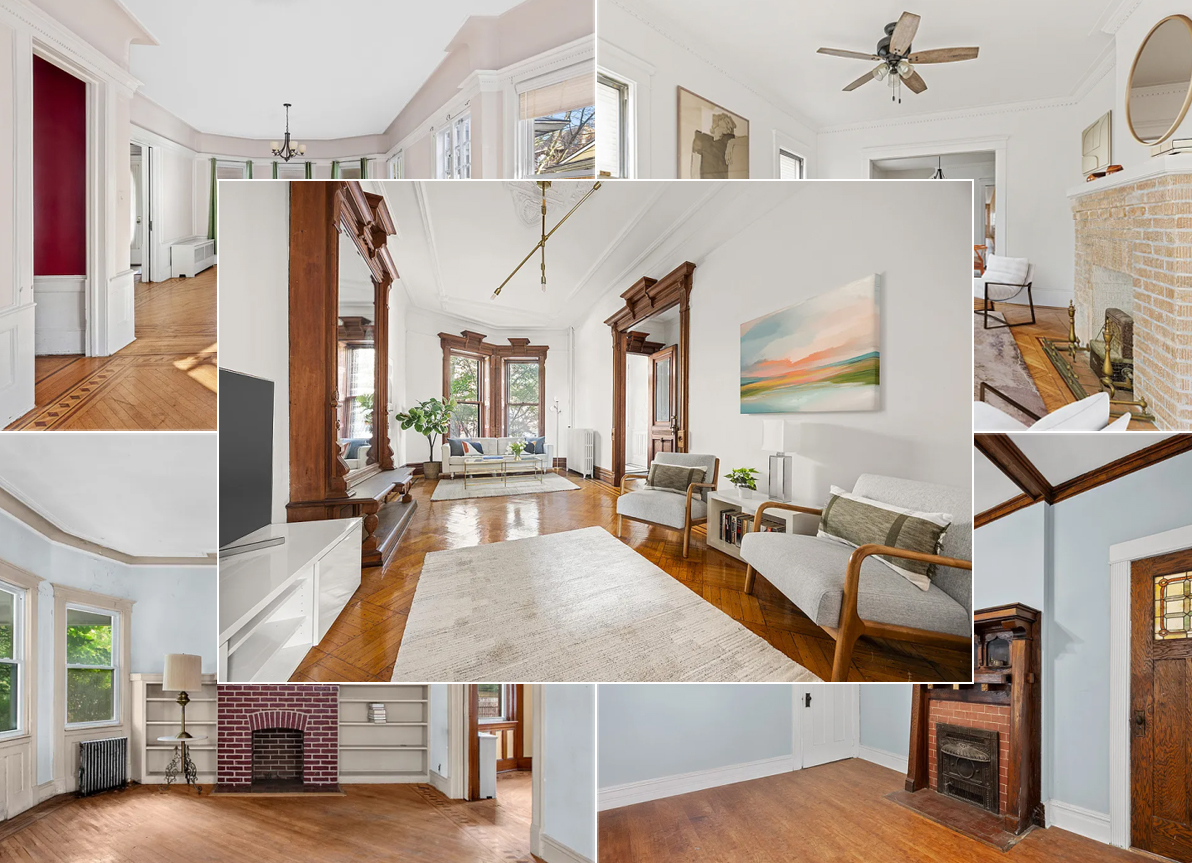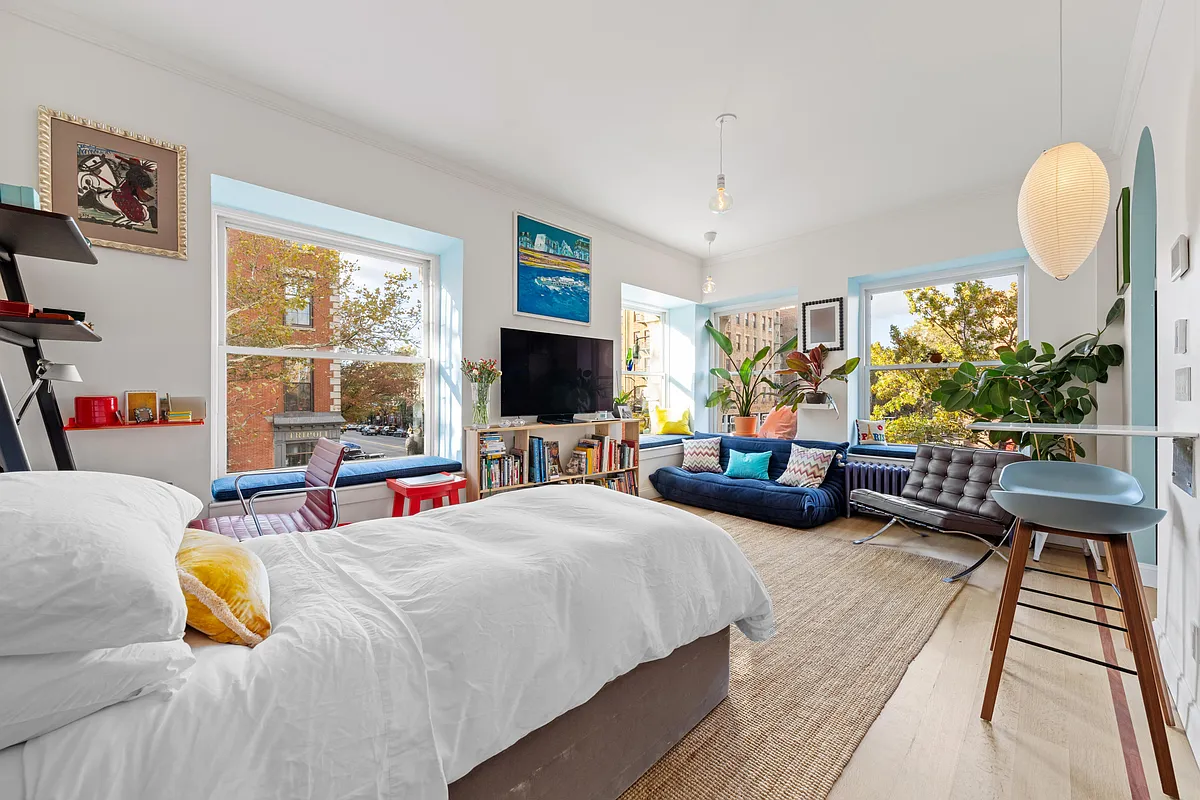The Lowdown on 31 Joralemon
[nggallery id=”43834″ template=galleryview] Last week there was much ado when a reader sent in a photo of 31 Joralemon Street in Brooklyn Heights, where an entire sidewall had been removed. We’ve now got all the dirty details from Michael Ingui from Baxt Ingui, the architects on the job. Pretty interesting—and scary: The existing wall at…
[nggallery id=”43834″ template=galleryview]
Last week there was much ado when a reader sent in a photo of 31 Joralemon Street in Brooklyn Heights, where an entire sidewall had been removed. We’ve now got all the dirty details from Michael Ingui from Baxt Ingui, the architects on the job. Pretty interesting—and scary:
The existing wall at 31 Joralemon Street was a frame wall with brick infill and at one point in its life was an interior party wall. We did interior demolition (filed under a separate permit) and uncovered a pretty scary sight. At some point this wall shifted and created an S curve on multiple levels. The wall came in past the center by 6 at the garden level, out 6 past the center at the parlor level, back in again at the second floor, and back out again at the 3rd floor. The walls were furred on the interior masking the condition and the exterior had a cement coating applied that in some areas was 5 thick to mask the issues with the wall. It is amazing that the wall stood for all of these years.
If you have to be in a situation like this it is nice to have a good team. Sam and the crew from Creative Renovations took the wall down methodically (not easy given all of the issues), the house is fully shored and the engineer on the project is D’Huy Engineering (the structural is filed and approved at the DOB and LPC). At the end of the day the wall will look just like the old wall except that it will actually stay up. The photos attached show the house from the street (taken today), Interior shoring (there are a few methods that the engineer is using including using the bearing wall by beefing it up with 4 x 4’s and bracing it), shoring at the garage, view of the stairs.
Good to hear it’s all under control!
31 Joralemon Reno Attracts Scrutiny [Brownstoner]





“…for poor-quality stone, you couldn’t achieve a uniform facade appearance with stone that was quarried across the grain.”
-Wber
“Veneer stones, which go on houses, are thin and flat and were always cut and set with the bedding layers running vertically. You can’t have horizontal layers on such a thin piece or it would shear along the layers.”
-Minard
Ah! It’s all starting to make sense!
Spoken like an engineer, bf!
But true – historically things were built with many more redundancies than today. (Not too mention that most of the really badly built buildings fell down years ago!)
“a wall that was not designed to be an exterior structural wall, held up this long, is a sign that they knew how to build 150 years ago.”
Arrrgh. No it is not. Just because some stuff is built with a margin of error (still goes on today) and miraculously manages to not *completely* fail despite mostly failing is not a sign of how excellent the past was and how crappy the current world is.
(and I suppose whoever knocked down the building next to it and didn’t pay attention to the non-exteriorness of that structural wall was a time-traveler sent back from today to impose his/her crappy construction on the past?)
“struth, Cgar. Started grad work in Paleontology but then came back to NYC instead because boyfriend/ future hubby was a musician and you know the song. I can still look at the marble in bathrooms and identify the fossils. Totally useless but fun nonetheless.
DiBS – brownstone is a sandstone with micaceous particles, but not related to granites.
If you want to see good-quality brownstone, look down. The curbing in places like Brooklyn Heights, Fort Greene and Williamsburg (and other areas that urbanized before the Civil War) is often high-quality brownstone. The quality of the stone, and the fact that it is laid parallel to the bedding plane is why it has survived for so long.
You can judge the quality of the stone by looking at it closely. Good-quality stone will have finer and very uniform particle size, and often will have very little differentiation between laminae. Poor-quality stone will have larger and varied particle sizes and clear distinction between laminae, all of which are opportunities for water to get in and do its work. The result is delamination and spalling.
Bedding plane does make a difference. A poor-quality stone will probably deteriorate over time regardless, but even a good-quality stone’s deterioration will be hastened by improper orientation. The reason is that water gets between the laminae of the stone, and if the stone is laid perpendicular to the bedding plane, gravity gets into the game.
Laying brownstone perpendicular to the bedding plane made sense for spec-built buildings like brownstone rowhouses. It was much cheaper to quarry the stone in flat slabs, and for poor-quality stone, you couldn’t achieve a uniform facade appearance with stone that was quarried across the grain.
pigeon,
you are partially correct.
churches are faced with solid, chunky stones.
These are usually quarried and cut with the bedding layers running horizontally.
Veneer stones, which go on houses, are thin and flat and were always cut and set with the bedding layers running vertically. You can’t have horizontal layers on such a thin piece or it would shear along the layers.
There are houses in BH that have veneer brownstone (laid vertically) that are in excellent condition and there are churches (like the Episcopal church in Cobble Hill) with large masonry blocks that are falling off in chunks and are a mess. Again, it is the grade quality of stone. The best brownstone is called “freestone” because it un-layered. This is the best stuff. But in the old days the important thing was that the stone be soft, so it was easy to carve, and that it be plentiful. So a lot of sub-par stone was used in the construction of speculative houses and rows.
“I’m not sure there is much truth in the conventional wisdom about the layers being horizontal or vertical.”
posted by Minard
Minard,
Take a look at some deteriorating brownstone facades and you’ll see the decay is related to the direction of the grain. When the grain is parallel to the facade (i.e. perpendicular to the gound), chunks seperate and fall off.(It happens largely when water trapped inside the stone freezes and expands). When the grain runs perpendicular to the facade (i.e. parallel with the ground), such large-scale flaking does not happen.
That is one reason why some very old and prestigeous brownstones buildings (such as churches) are still in very good shape — care was taken to ensure that the brownstone was laid with the grain in the proper direction. But, unfortunately, this was not the case in mass produced brownstone homes.
Michael Ingui,
Thanks for the info and photos.
Very interesting and informative.
I’m glad the owners hired someone who clearly seems to know what he’s doing.
To see a place made of solid brownstone block, take a look at 14 Grace Court Alley. When they gut renovated you could see inside — the brownstone blocks that make up the facade are a good 18″ to 24″ thick and make up the entire wall.
Since the carriage house used to belong to Grace Church and the church has the same physical appearance on the outside, I assume the construction is the same over there.